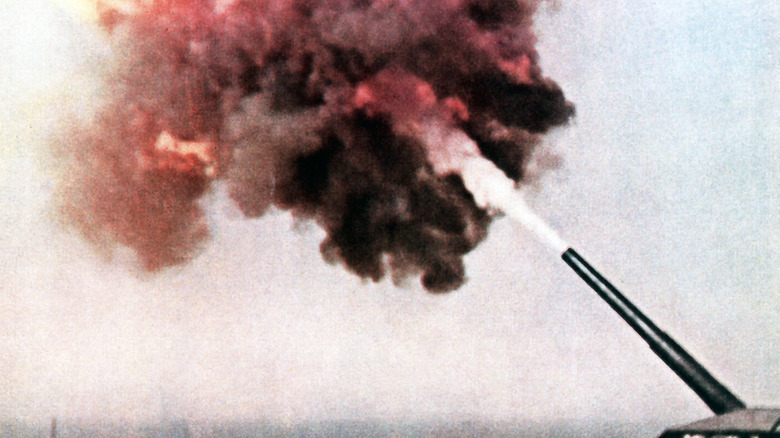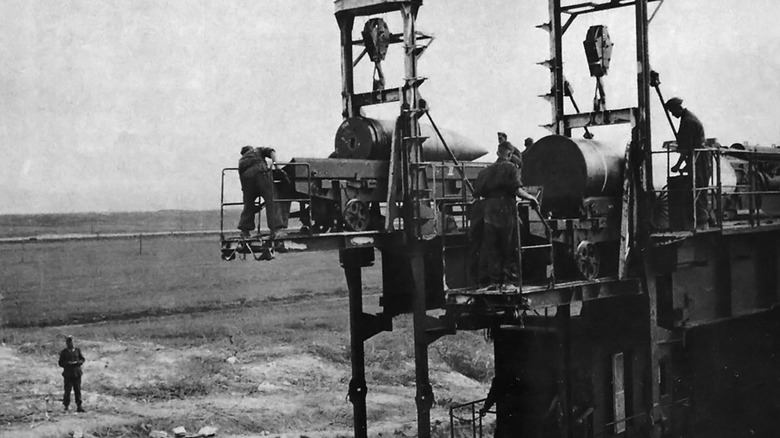This Is The Largest Gun Ever Used In Battle
Even before the proliferation of gunpowder, larger-than-normal weaponry was immortalized by historical records for their uniqueness. In 1304 King Edward I used the "Warwolf," possibly the largest trebuchet ever built, to destroy Stirling castle against what was then the last of his Scottish opposition. Supposedly the defenders surrendered upon realizing how massive the weapon would be, but Edward refused to accept as he wished to witness its power at work after months of construction (via Medieval Chronicles).
One of history's first massive cannons was the Dardanelles gun. This cannon was used in the 1453 Ottoman siege of Constantinople, securing the destruction of Rome's last vestige when it helped break the city's walls (via History Answers). Over the following centuries comparable guns were produced by several militaries, including the German Empire's. In World War I the Krupp company produced the "Paris Gun," which according to Britannica fired its 240 mm shells at Paris from up to 75 miles away. While this railway gun already broke records, it set the precedent for the largest gun Krupp (or anyone) would ever produce, the Schwerer Gustav (via Business Insider).
Despite being the largest gun ever made, the Gustav was rarely used
For context, the largest battleships ever built, the Japanese Yamato-class, were armed with massive 460 mm guns. The Gustav dwarfed even these with 10,000-pound 800 mm shells. Construction began in 1937, with the aim of breaking sieges in future battles. The weapon was impressive, but in general its size was more of a detriment than anything else. The overall weapon was 38 feet tall and required over 3,000 personnel to lay out its two dedicated railway tracks and set it up for use. It was a sluggish process that rendered its use rare, with both barely reaching Stalingrad and Leningrad before being pulled back. When the Gustav and its twin, "Dora," did see use, they wrought destruction unprecedented for a single gun (via War History Online).
In 1942, during one of the rare instances of its use in combat, the Gustav fired 47 rounds at Soviet fortifications and ammunition depots in Sevastopol (via All That's Interesting). Beyond this, the gigantic artillery pieces seldom saw any real use, and no more were manufactured. As Germany lost air superiority, such massive guns would have only represented target practice for Allied aircraft. Germany hid them away in favor of the V-1 flying bomb and V-2 rocket programs, which allowed them to fire similarly sized projectiles with greater range and far fewer resources than the Gustav.

